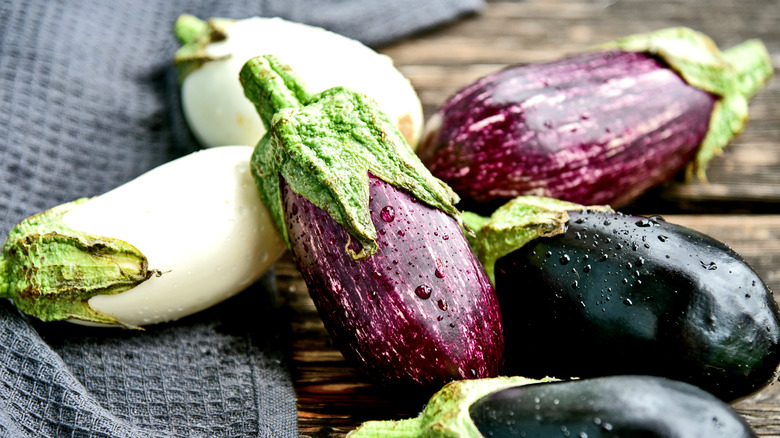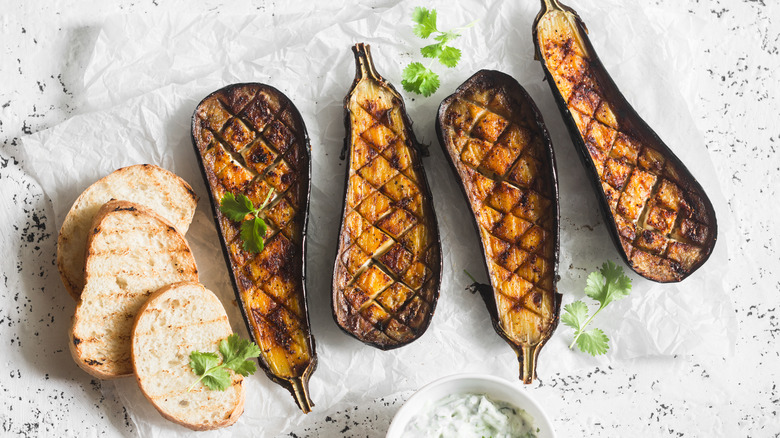Is There A Difference Between Aubergine And Eggplant?
Eggplant is a common term you hear in the United States to refer to an elongated, rounded dark purple-hued orb. With tough skin on the outside protecting its dense flesh, this vegetable is often prepared as a delicious dish. A particular favorite for many is eggplant parmesan, a baked dish made with thinly sliced eggplants, cheese, and tomato sauce, among other ingredients. Chances are, if you've traveled to England or Canada, or if you speak French, you likely know this summer produce goes by another name: aubergine.
Although there are two different names, don't let that confuse you about this vegetable. That's because eggplants and aubergines are actually the same thing, according to The Cookful. Eggplants are classified as a vegetable because they are used in savory dishes from a culinary perspective. However, it's technically actually a fruit, just like tomatoes, which makes sense since they are both members of the nightshade family. To make things even more interesting, eggplants are botanically considered to be berries. (via The Cookful).
Where the eggplant name comes from
The word aubergine comes from French. The term "eggplant" was inspired by a variety, called white brinjals, according to The Cookful. This variety, as you may have guessed, looks like an egg dangling from the stem. There are many varieties of eggplants out there, but you may have to grow them yourself or shop at specialty stores to find some of the many different colors, shapes, and sizes out there. Skinny and elongated purple eggplants are common in Thai and Chinese cuisine, while white brinjals are typical in Indian cuisine (via The Cookful).
These bright and shiny-skinned veggies are versatile making it fun to prepare eggplants in many ways, such as roasting, grilling, steaming, sautéing, or even stuffing them with a savory filling (via Real Simple). Because of its spongy flesh, eggplant absorbs oil and sauces especially well. This can be great for building up the plant's flavor since it's naturally mild. It can also absorb a lot of calories from oils and other ingredients, making it perhaps not the absolute healthiest item in the produce section. There are a variety of techniques and methods for perfecting how to cook this ingredient, producing delicious meals like caponata and baba ganoush. Once cooked, you can also eat it cold in a salad, as a dip, as a side dish, or as a main meal.

